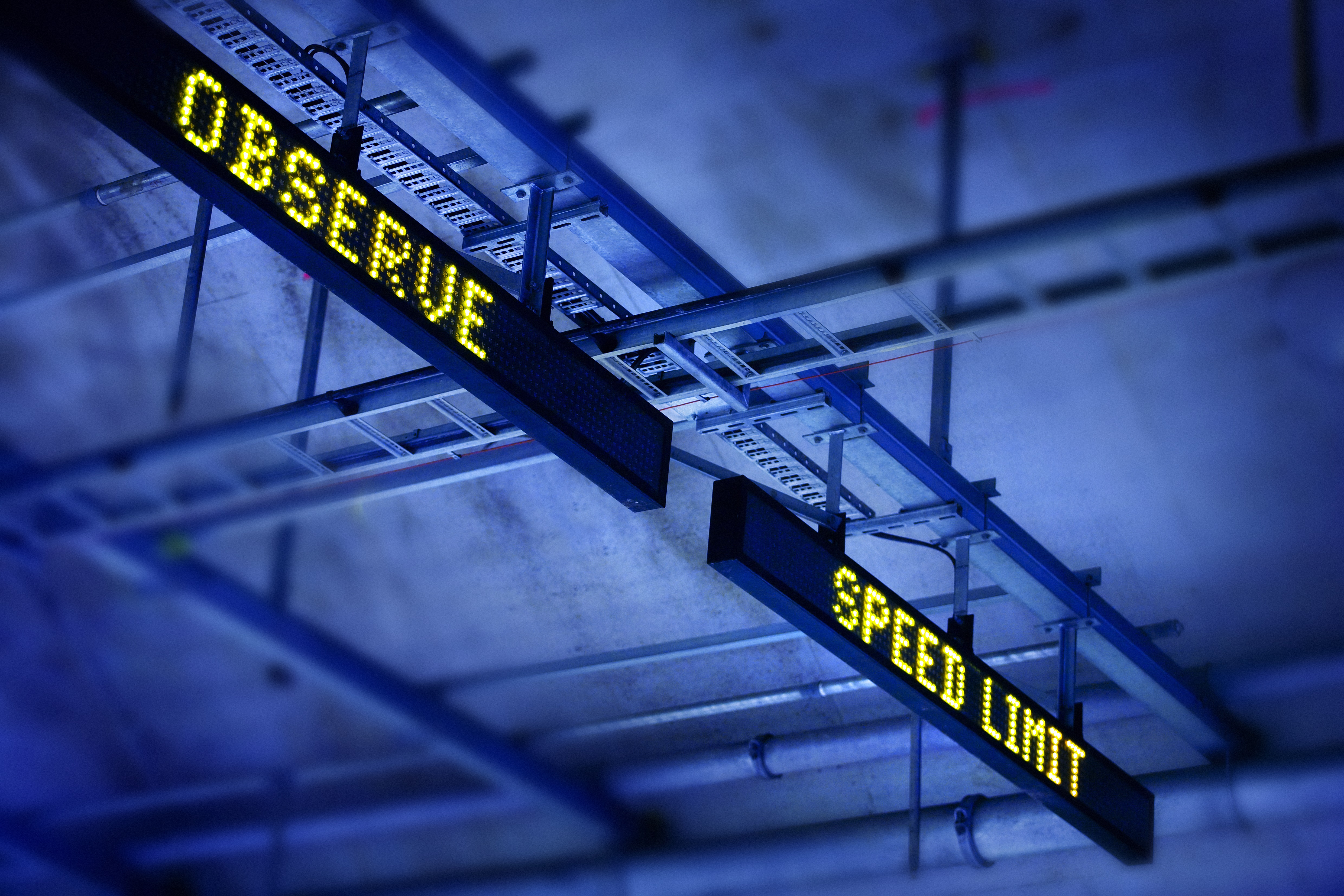
Level 2 driver assistance vehicles have little problem reading fixed metal signs at the roadside - but it’s a different story with VMS in tunnels, finds Alan Dron
Following a series of hands-free driving tests in tunnels, an Australian road authority believes that car manufacturers have to up their game before vehicles have the required levels of competence to consistently perform ‘assisted driving’ tasks.
The ‘level 2 driver assistance’ vehicles – which incorporate capabilities such as lane-keeping and observance of speed limits – displayed varying levels of proficiency, said Douglas Spencer-Roy, corporate affairs and marketing manager of road operator ConnectEast.
Lane markings
As a result of the trials, ConnectEast is repainting all its lane markings to ensure they are more easily followed by assisted-driving vehicles. This involves using a more reflective paint and identifying areas where lane markings are not contiguous, which
can cause problems for the vehicles’ systems. Currently, assisted vehicles’ speed adherence capabilities are limited to warning a driver if he is exceeding a speed limit. However, the next stage will be for vehicles to automatically adjust their speed as they read speed signs by the roadside.
The abilities of vehicles to read speed signs “varied quite a bit from manufacturer to manufacturer”, said Spencer-Roy. “They generally read fixed metal signs at the roadside very well, but have quite patchy performance with variable message signs [
ConnectEast initially wondered if this varying performance was caused by a problem with the VMS, such as its refresh rate. Research found, however, that the problem lay with some vehicles’ sensing software, which required modification. Feedback has been provided to several manufacturers to allow them to improve their vehicles for use on Victoria’s roads.
Low light
“However, with the new 5.9GHz system, that’s almost like having a VMS in the car,” said Spencer-Roy. “With that infrastructure we‘ll be able to send a message out to a vehicle on a stretch of road and it will display it to the driver. As that becomes more common, VMS signs will become less relevant.”
Relatively low light levels within tunnels did not affect the cars’ capabilities, he added – except at the entrance and exit portals, where the lane-keeping function sometimes dropped out because of the sudden change in light levels.
Generally, however, the systems performed well in tunnels, as conditions there are relatively ‘calm’ environmentally, with consistent light levels and little visual clutter to distract the vehicles’ image recognition systems.
Ventilation on demand
Meanwhile, ConnectEast believes it has achieved a world first with the installation and licensing of a tunnel ‘ventilation on demand’ project (pictured below).
The original ventilation system, operational since the
However, the fans could only be set at ‘off’ or ‘fully on’. These sudden changes in speed caused wear and tear on their components.
A new, self-regulating, ‘closed loop’ system has now been installed, with variable-speed drives and new impellers in the 10 ventilation fan housings. The fully-automatic system constantly monitors both the output and air quality of the extracted air and adjusts the speed of each fan accordingly.
Emissions levels
It will, for example, detect the presence of higher levels of emissions from heavy, diesel-powered vehicles and increase the airflow through the fans.The new system has led to reductions in greenhouse gas emissions (some 6,400 tonnes per year) and noise annoyance for local communities, as well as a reduction in the electricity usage - and thus cost - of operating the fans.
“The results of our innovative tunnel ventilation on demand system have exceeded expectations,” added Spencer-Roy. “Power used by the system has reduced by a massive 68%, and the audible noise from the ventilation stacks has halved.”
As a result, the system has been licensed by Environment Protection Authority Victoria.
Spanish company
The 3.3km SR99 Alaskan Way Viaduct Bored Tunnel in Seattle is expected to open by the end of this year and SICE is providing a package of management software covering such areas as incident detection, air quality monitoring and communications, as well as security and access control.
Meanwhile, SIDERA handles a throughput of 63,000 vehicles a day at Waterview, whose twin bores constitute the longest and most complex tunnel in the country. As well as handling surveillance and incident management, it reports on the performance of the roadways and can disseminate traveller information to the motoring public and exchange critical information among agencies.
The tunnel authorities have identified and planned for 128 different scenarios per tunnel, including 86 places in the tunnel where fire could occur. During pre-opening testing, the system ran through around 200 fire scenarios to ensure all eventualities could be handled.
Safety priority
Tunnel and roads authorities’ first priority is, of course, safety. Some devastating tunnel fires over the past two decades – the 1999 Mont Blanc tunnel inferno and the 2001 Gotthard tunnel blaze, for example – have underlined the unrelenting need for it, but they are also naturally keen to implement safety measures as economically as possible. It is the combination of those two factors, says
While the 350 can ‘look’ 350m in either direction and is ideal for straight stretches of tunnel, the 175 is particularly suitable for entrance and exit areas and for areas where there are sharp inclines or bends, which limit the 350’s effective range. In the CTS175, Navtech produced a radar with the same capabilities as the 350, but with scaled-down range and a lower price point.
Navtech’s products are frequently pitched against visual and acoustic sensors. Each have their own selling points, the company accepts, but it believes that radar tends to win out not only because its performance is unhindered if fire does break out and the resulting smoke obscures visibility for cameras, but because of the lower cost of ownership. Tunnel authorities do not have to clean the sensors of tyre and road dust and accumulated exhaust particles every few months.












